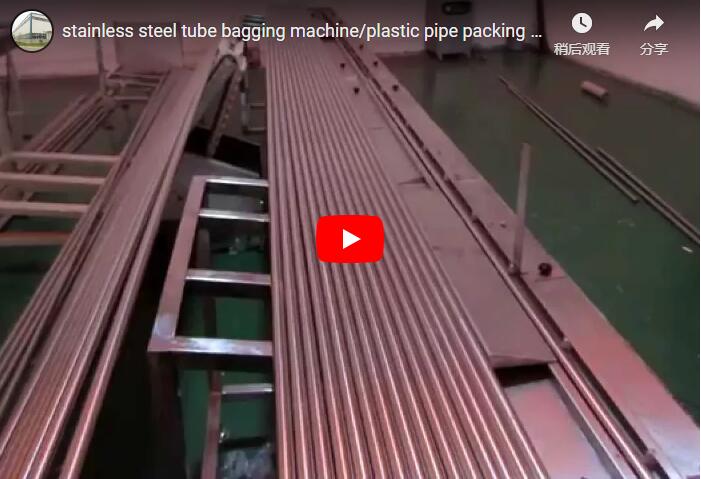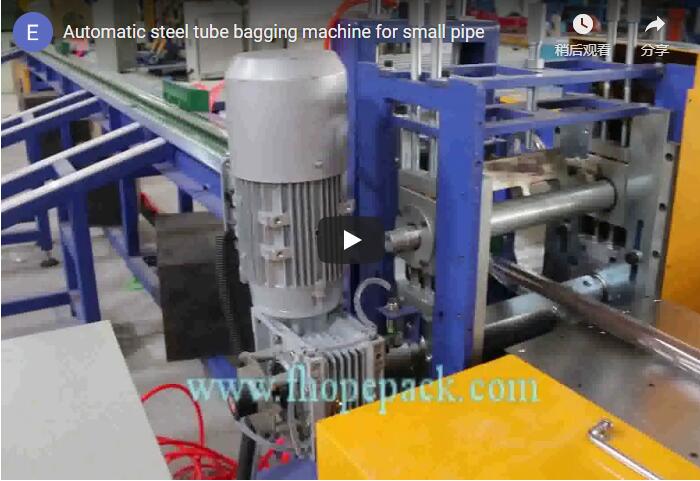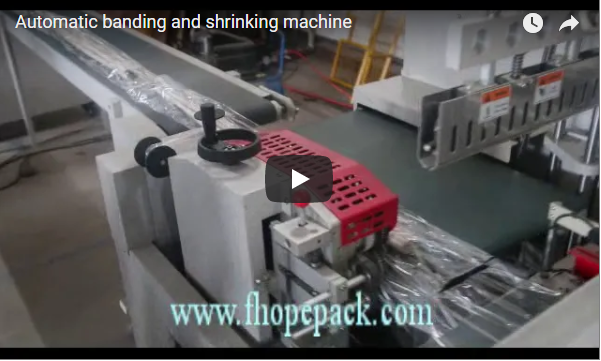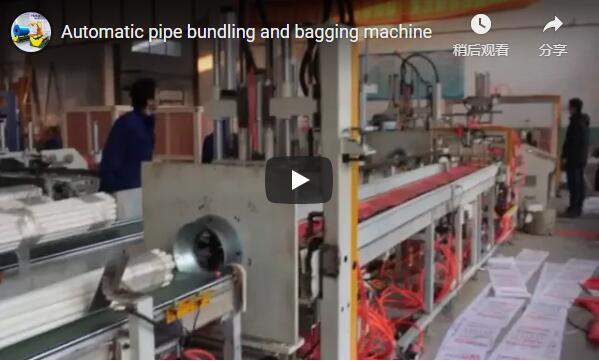Streamlining Operations: A Deep Dive into High-Speed Single Steel Pipe Bagging Lines
In today's demanding manufacturing and distribution environments, efficiently packaging individual steel tubes and pipes is crucial for product protection, logistical ease, and cost control. Manual bagging methods often fall short, creating bottlenecks and inconsistencies. The high-speed steel tube and pipe single bagging packing line machine emerges as a powerful automated solution, specifically engineered to address these challenges head-on. This technology is rapidly becoming indispensable in sectors ranging from steel production and processing to construction supply and logistics.
1. The Bottleneck of Manual Bagging
Traditionally, bagging individual pipes required significant manual labor. This process is often slow, prone to inconsistencies in sealing quality, and can lead to worker fatigue or repetitive strain injuries. Furthermore, ensuring each pipe receives adequate protection against moisture, dust, and surface scratches during handling and storage is difficult to maintain consistently with manual methods. These inefficiencies directly translate to higher labor costs and potential product damage, impacting the bottom line.
2. Core Functionality: How the High-Speed Bagging Line Works
This automated packing line executes a sequence of precise operations to efficiently bag individual steel tubes or pipes:
- Infeed: Pipes are typically fed onto the line via conveyor systems, often indexed one by one into the bagging station.
- Film Dispensing: A roll of bagging material, usually Polyethylene (PE) film, is automatically dispensed and formed around the incoming pipe.
- Sealing: High-integrity seals are created, commonly using heat sealing technology (either impulse or constant heat), to fully enclose the pipe within the bag. This step is critical for ensuring protection from environmental factors.
- Cutting: Once sealed, an automated cutter separates the bagged pipe from the continuous film supply.
- Discharge: The individually bagged pipe is then discharged from the machine, often onto an outfeed conveyor for transfer to the next stage, such as bundling, palletizing, or direct storage.

3. Key Technical Specifications and Performance Metrics
While specific configurations vary, typical features and capabilities of these high-speed lines include:
- Packaging Speed: Capable of processing significant volumes, often reaching rates of up to 120 pieces per minute, drastically increasing throughput compared to manual methods.
- Pipe Diameter Range: Designed with adjustable guides and sealing mechanisms to accommodate a wide spectrum of pipe diameters (e.g., [Specify typical Min-Max diameter range, e.g., 10mm - 76mm]).
- Pipe Length Range: Can handle various standard and custom pipe lengths (e.g., [Specify typical Min-Max length range, e.g., 1m - 6m]), often with adjustments for different runs.
- Bagging Material: Primarily utilizes PE film, offering a balance of cost-effectiveness and protection. Film thickness capabilities can vary ([Specify typical thickness range, e.g., 30-100 microns]).
- Sealing Method: Robust heat sealing ensures package integrity.
- Control System: Typically features a Programmable Logic Controller (PLC) with a Human-Machine Interface (HMI) touchscreen for ease of operation, parameter adjustments, and diagnostics.
4. Performance Advantages for Fabricators and Distributors
Investing in a high-speed single pipe bagging line offers tangible benefits:
- Increased Throughput and Reduced Bottlenecks: The sheer speed (up to 120 pcs/min) significantly outpaces manual efforts, eliminating packaging as a production constraint.
- Enhanced Product Protection: Consistent, high-quality seals safeguard pipes from moisture, dust, dirt, and superficial damage during transit and storage, reducing rejects and claims.
- Labor Optimization and Cost Savings: Automating the bagging process frees up valuable personnel for other tasks, directly reducing labor costs associated with packaging.
- Process Consistency and Quality Control: Automation ensures every pipe is bagged and sealed uniformly, improving overall package quality and brand presentation.
- Flexibility for Diverse Product Mixes: The ability to handle various pipe diameters and lengths makes these machines versatile assets for companies dealing with a wide range of products.
5. Integration and Customization Options
These bagging lines are rarely standalone units. They are designed for integration into broader production or processing workflows. Common integration points and customizations include:
- Upstream Integration: Connecting directly to pipe mills, cutters, or treatment lines via automated conveyors.
- Downstream Integration: Feeding bagged pipes into automatic bundling machines, strapping systems, or robotic palletizers.
- Labeling and Printing: Incorporating in-line printing or automated label applicators for product identification, batch tracking, or barcode scanning.
- Advanced Sensing: Adding sensors for quality checks, such as verifying pipe presence or seal integrity.
6. Operational Considerations: A Fabricator's Perspective
From practical experience, implementing and running these machines involves considering:
- Maintenance: Regular checks on sealing elements, cutters, and film feed mechanisms are essential for reliable operation. Preventative maintenance schedules are key.
- Operator Training: Staff need training on the HMI, basic troubleshooting, film roll changes, and safety procedures. Modern interfaces are generally intuitive but require familiarization.
- Footprint and Utilities: Ensure adequate floor space is allocated, considering infeed/outfeed conveyors. Verify power and compressed air requirements.
- Film Sourcing: Establishing a reliable supply of quality PE film compatible with the machine's specifications is crucial for uninterrupted operation.
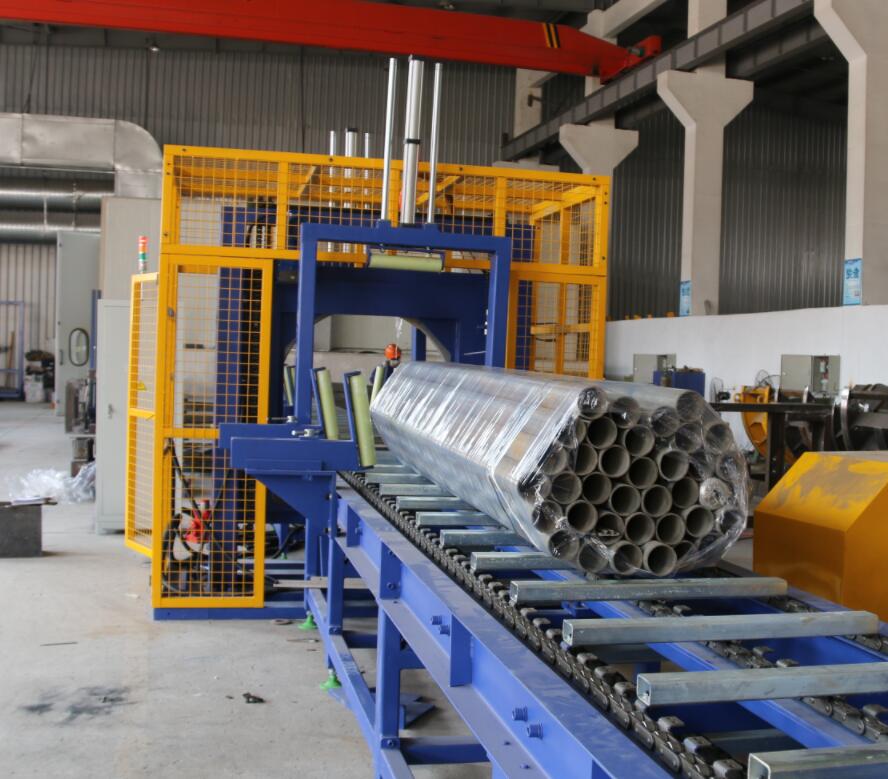
Conclusion: A Strategic Investment in Efficiency
The high-speed steel tube pipe single bagging packing line machine represents more than just packaging equipment; it's a strategic investment in operational efficiency, product quality, and cost reduction. By automating a traditionally labor-intensive process, fabricators and distributors can achieve significant gains in productivity, ensure better protection for their valuable products, and maintain a competitive edge in the marketplace. Its ability to handle high volumes with speed, consistency, and flexibility makes it an essential component of modern steel tube and pipe handling operations.
For detailed specifications or to discuss how this technology can be applied to your specific operational needs, please explore further resources or reach out for consultation.
https://www.fhopepack.com/Automatic-pipe-bundle-packing-line.html
Contact us for inquiries: info@fhopepack.com

